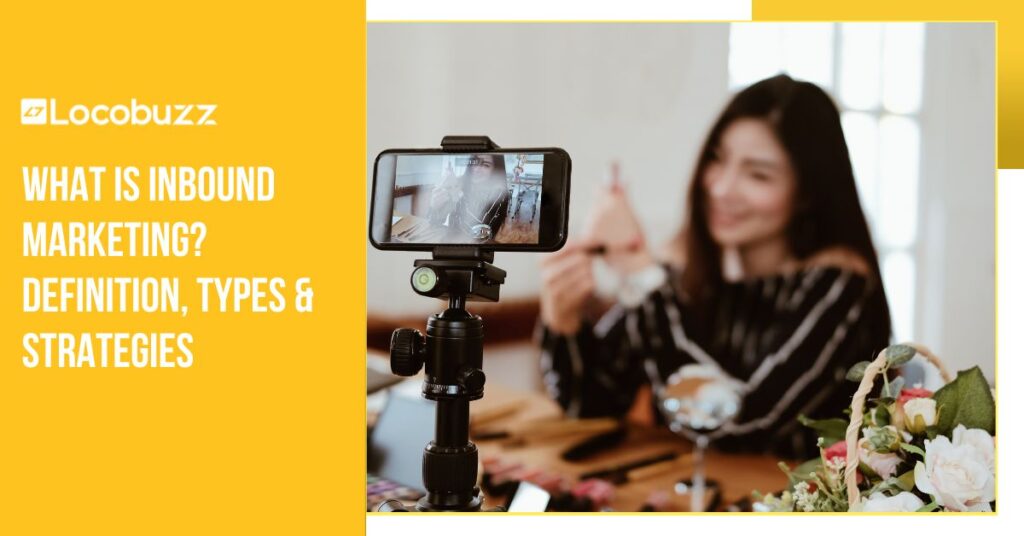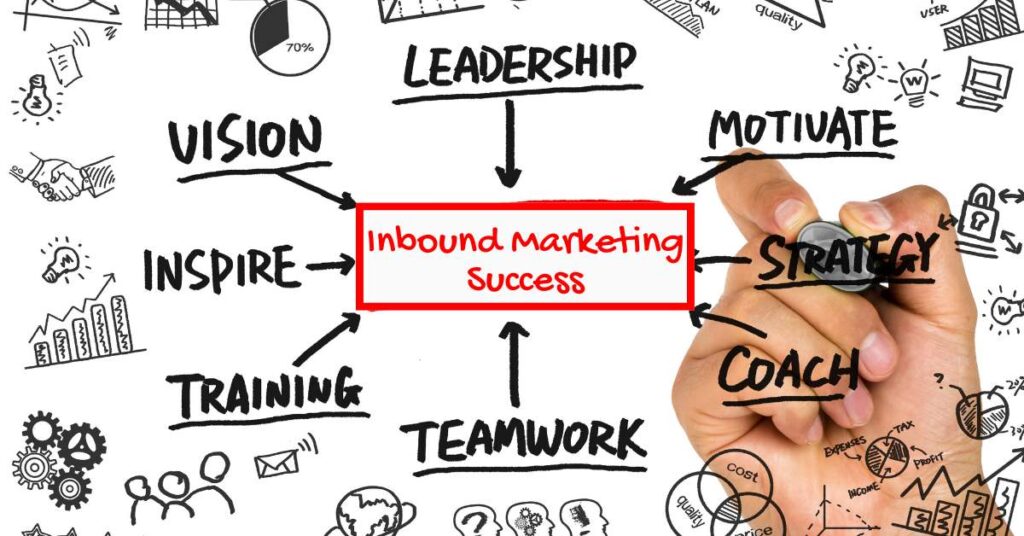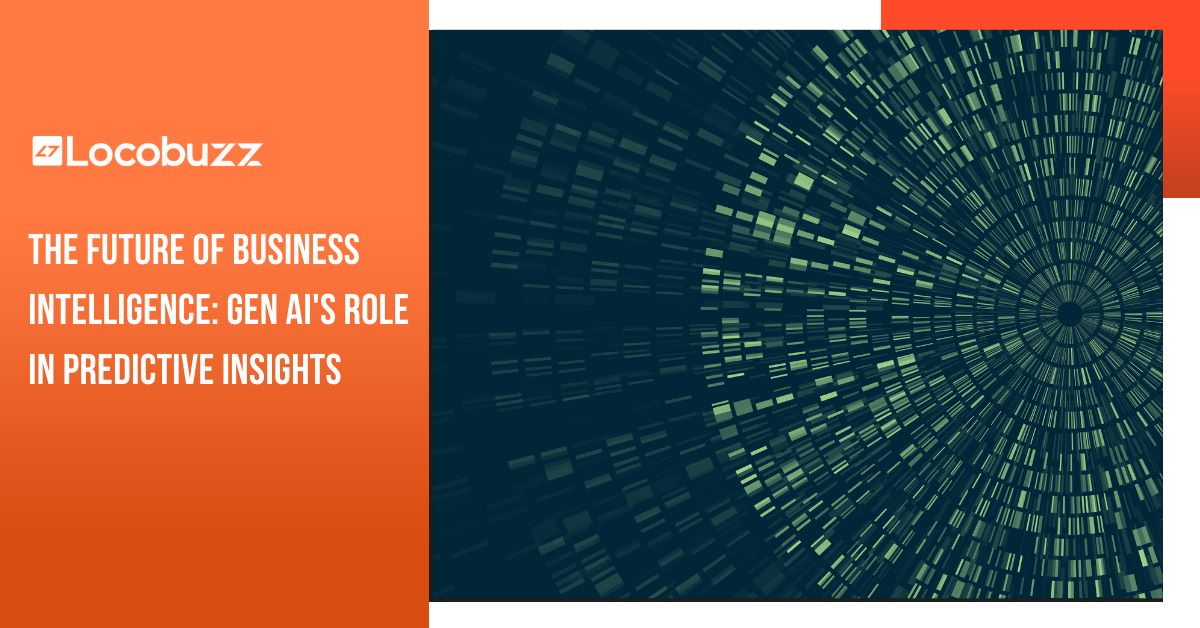What is Inbound Marketing? Definition, Types & Strategies

Table of Contents
What is Inbound Marketing?
Inbound marketing is a customer-centric approach to marketing that focuses on attracting potential customers by providing them with valuable content and experiences tailored to their needs and interests.
Instead of using traditional outbound marketing methods like advertisements that interrupt consumers, inbound marketing aims to pull people towards a brand by offering them relevant and helpful information. The strategy involves creating various types of content, such as blog posts, videos, social media posts, and e-books, that address the pain points and questions of the target audience. By consistently delivering high-quality content, businesses aim to establish themselves as trustworthy authorities in their respective industries, thus building credibility and brand affinity.
Inbound marketing emphasizes understanding the buyer’s journey and creating content that aligns with each stage of that journey, from awareness to consideration to decision-making. By doing so, companies can engage with prospects at the right time with the right message, nurturing them through the sales funnel. Moreover, inbound marketing prioritizes building long-term relationships with customers rather than focusing solely on one-time transactions.
By providing ongoing value and support, businesses can foster loyalty and advocacy among their customer base, leading to repeat business and word-of-mouth referrals. In summary, inbound marketing is about attracting, engaging, and delighting customers by delivering relevant and valuable content that addresses their needs and interests, ultimately driving business growth and fostering lasting relationships.
Why is Inbound Marketing Important
Inbound marketing is important due to its ability to guide potential customers through each stage of the buyer’s journey and ultimately driving business growth. Let’s delve into why each stage of inbound marketing—Attract, Engage, and Delight—is essential:
Attract:
Attracting the target audience is the first step in inbound marketing. By creating high-quality content that addresses the needs and interests of potential customers, businesses can increase brand awareness and draw people towards their brand organically. This stage is crucial, especially for reaching individuals who may not be aware of the brand or its offerings. By sharing relevant and informative content through various channels, businesses can capture the attention of their target audience and establish themselves as trusted sources of information within their industry.
Engage:
Once the audience has been attracted, the next step is to engage with them effectively. In this stage, businesses aim to convert prospective customers into paying ones by creating targeted narratives that resonate with their needs and preferences. By leveraging the insights gained during the attraction phase, businesses can tailor their messaging to address specific pain points and concerns, guiding customers towards a purchase decision. The key here is to maintain a neutral and subtle approach, allowing customers to feel empowered and in control of their decision-making process.
Delight:
The final stage of inbound marketing is to surpass customer expectations and establish long-term loyalty. By providing exceptional experiences, personalized recommendations, and ongoing support, businesses can delight their customers and cultivate strong relationships. This stage is crucial for building brand advocacy and encouraging repeat purchases and referrals. By continuously investing in customer satisfaction and delivering value beyond the initial sale, businesses can foster loyalty and create brand ambassadors who advocate for their brand to others.
Types of Inbound Marketing
Blog Posts
E-books & White Papers
Infographics
Videos
Webinars
News Articles
Research
Social Media
Slideshare
Discover how Locobuzz transform your marketing strategy
What are the benefits of Inbound Marketing?
The benefits of inbound marketing stem from its ability to provide valuable content to customers across various channels, resulting in a multifaceted advantage for brands.
Educational Content: Inbound marketing empowers brands to deliver diverse content types, ranging from informative product descriptions to insightful blog posts. By educating customers about brand offerings, values, and industry-related insights, brands enhance their visibility and foster deeper engagement with their audience. This educational aspect not only helps in addressing customer queries and concerns but also positions the brand as a knowledgeable authority within its niche. Brand Voice and Credibility: Inbound marketing plays a pivotal role in defining and amplifying a brand’s voice, allowing it to effectively communicate its values, mission, and personality to its target audience. Through the consistent delivery of valuable content and active engagement with customers, brands can establish trust and credibility, enhancing their reputation within their industry. By building genuine connections with their audience, brands foster a sense of authenticity, which further strengthens their brand perception and loyalty among customers.
Customer Retention: While directly quantifying inbound marketing efforts can be challenging, the emphasis on building relationships often leads to increased customer retention rates. By consistently delivering valuable content and engaging with customers, brands nurture loyalty and encourage repeat purchases. Additionally, soliciting feedback through surveys and interviews enables brands to gain valuable insights into customer preferences and sentiments, facilitating continuous improvement in their strategies and customer experiences.
SEO Improvement: Crafting content with a customer-centric approach not only benefits the audience but also enhances a brand’s search engine optimization (SEO) efforts. By aligning content with the needs and interests of potential customers and incorporating relevant keywords, brands can improve their visibility in search engine results. Moreover, providing informative and valuable content helps in optimizing website elements, driving organic traffic, and enhancing online discoverability, ultimately boosting overall SEO performance.
In summary, the benefits of inbound marketing extend beyond mere customer acquisition, encompassing customer retention, brand credibility, and SEO enhancement. By delivering valuable content, nurturing relationships, and maintaining a consistent brand voice, brands can establish themselves as trusted authorities within their industry and drive sustainable growth in the long term.
What is the difference between Inbound Marketing and Outbound Marketing?
Inbound marketing operates on the principle of attracting customers organically by creating valuable and relevant content that aligns with their interests and needs. By focusing on nurturing prospects and delivering helpful information, businesses aim to build meaningful relationships with their audience, positioning themselves as trusted advisors rather than aggressive sellers. This approach emphasizes providing value upfront, earning consumer trust, and guiding prospects through the buyer’s journey at their own pace.
Conversely, outbound marketing employs more traditional and interruption-based tactics to reach potential customers. Cold calling, mass advertising, and direct mail campaigns are designed to push marketing messages to a wide audience, often without regard for their specific interests or preferences. While outbound marketing may reach a larger audience, it is often perceived as intrusive and less personalized compared to inbound strategies. Additionally, outbound marketing tends to have a lower conversion rate and higher acquisition costs compared to inbound methods.
The key distinction between inbound and outbound marketing lies in their approaches to attracting and engaging customers. Inbound marketing focuses on nurturing prospects with valuable content, while outbound marketing relies on proactive outreach to spread awareness and capture attention. Ultimately, businesses must choose the approach that best aligns with their goals, target audience, and overall marketing strategy.

Inbound Marketing Strategies
Leverage Guest Posts
Harness the Power of Influencers
Engage in Social Listening
Social listening involves monitoring and analyzing conversations on social media platforms to gain insights into audience perceptions, preferences, and trends. By actively engaging in social listening, businesses can identify opportunities for content creation, address customer concerns, and participate in relevant discussions within their industry. Social listening also enables businesses to track brand mentions, sentiment, and competitor activity, allowing for more informed decision-making and strategic planning.






















